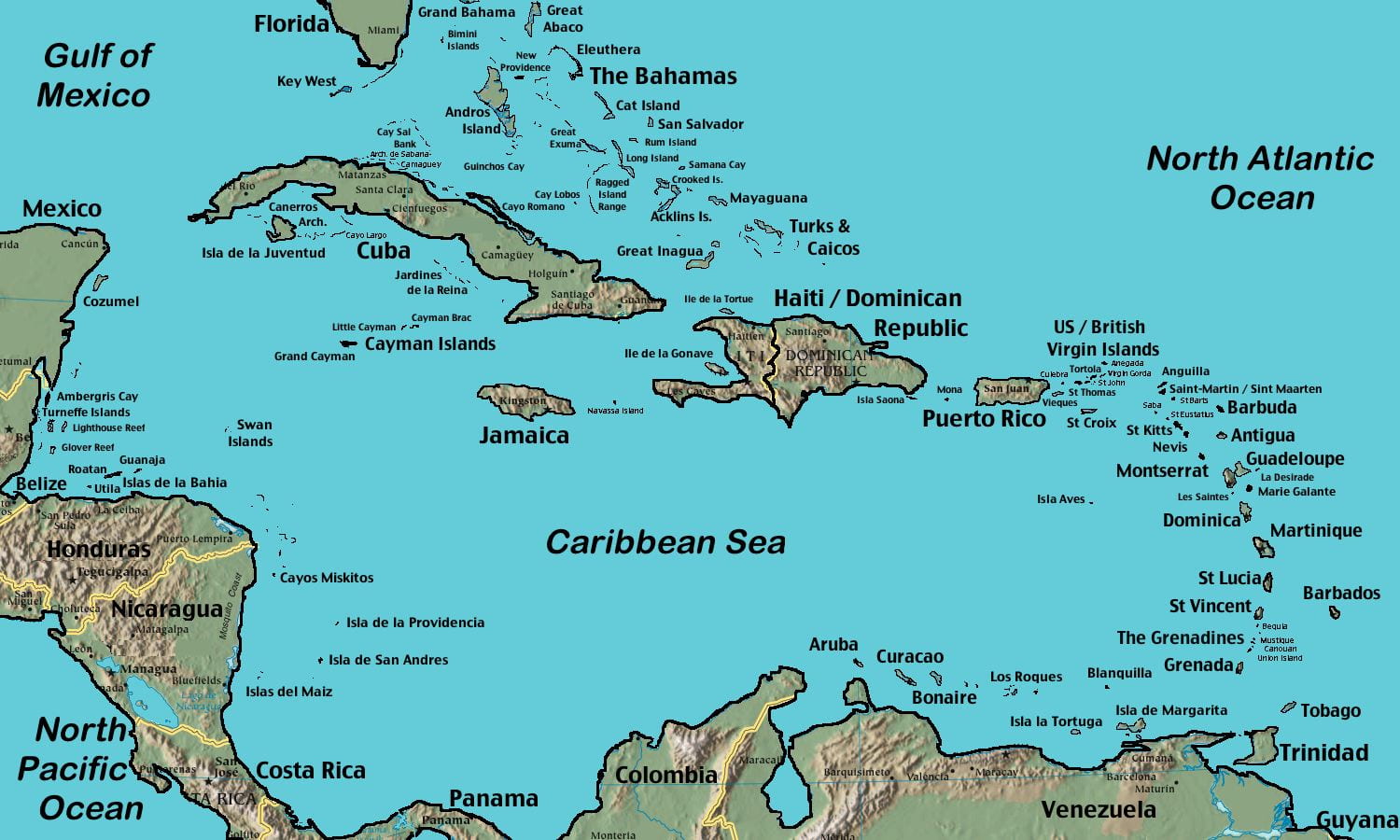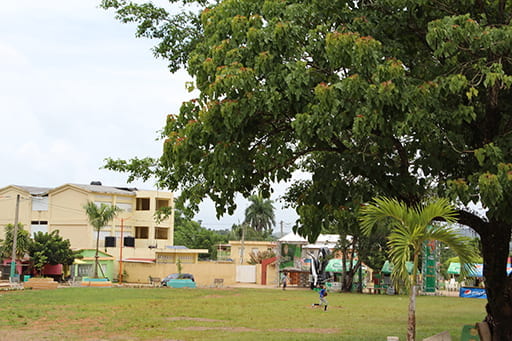Research Sites
This is what is called a multi-sited research project because we have interviewed people in Cuba, the Dominican Republic, Puerto Rico and the Pacific Northwest.
But there’s an additional dimension to our work: interviewees have distinct relationships to the lands they steward. Some have been where they are for generations; some had to leave their homelands a long time ago due to forced removal or due to dire socio-economic conditions; others live in a constant movement between territories; and others are recent immigrants.
Abbebe Oshun migrated from Cuba to the Dominican Republic.
Jannes moved to the PNW from Miami – and her parents migrated to Miami from Cuba.
RaheNi and Myrna are transterritorial and move continuously between Puerto Rico and the mainland.
Mery and Johnny have lived for generations in the same mountains in Puerto Rico; Johnny has lived and worked intermittently as an agricultural seasonal worker in the United States and construction worker in St. Croix, where some family members have relocated.
Tuwaliri returned to the place of her birth after 40 years in the Dominican Republic’s capital, Santo Domingo.
Adela, Luis Fidel, Daniela, Chimbi, Ramoncito and Graciela have lived for several generations in their respective rural regions in the Dominican Republic. Their families settled either as runaway maroons during slavery in the eighteenth century/early nineteenth century, or following emancipation and nationalization in 1844.
Rafelito is part of the well-known Congo community of Villa Mella, a UNESCO World Heritage culture and community that has greatly suffered commodification and other vulnerabilities. In fact, Rafelito agreed to an interview in the hopes of off-setting some of the damage produced through the designation and the ways in which it impacted his community.

Milady and Amelia are two generations removed from slavery in Cuba. Their grandparents having been born into it. And at least one of their great grandparents was born in Africa and sold into slavery in the mid to late 19th century.
Chiquita and Hector Luis live in the same mountains stewarded in Puerto Rico by their ancestors for generations, while half of their family have lived in the U.S. mainland or the Dominican Republic for some or most of their lives.
Joe’s Takelma-Siletz ancestors have been here since time immemorial and have survived countless atrocities – including the removal of their people from what today is known as northern California and southern Oregon to the Siletz Reservation on the central Oregon coast.
Gwen’s father came from Alabama in the early 1920s as part of the timber industry.
These are just some of the roots of those whose stories are included here.
In most cases, the folks we interviewed also tend to gardens or to specific plants, even if they are not herbalists. Plants sustain our elders’ well-being and their communities. They provide shade, wood for houses, food, and medicine. They also help elders attend to the spirits, to the dead, to the living, and to the ancestors. In some cases, we were lucky enough to be invited into our elders’ gardens or forests. There, they would share with us the various plants that they tend to, and have tended to over decades, and sometimes, generations.
» Revisit our StoryMap to be taken on a visual journey of our research sites.
The Caribbean

Source: The World Factbook
The Caribbean was named as such by Christian colonial conquistadores and settlers. Its name refers to the name the Spaniards gave to the Kalinago people, Carib. In truth, there were and are hundreds of tribal communities spread throughout the Caribbean at the time of contact. Our ancestors include Kalinago, Lucayo, Ciguayo, Arahuac, Iñeri, Macorixeño, and many, many other peoples. The area itself was developed through movement, trade and economic expansion of Arawak peoples from the south and other Indigenous peoples from the mainland in the north and to the west. Following Christian colonial settlement and the development of the slave trade, peoples of African descent from the Iberian peninsula and from across the African continent were brought to the islands as enslaved laborers. Their first sites of labor included gold mines; then, sugar plantations, and in some cases, cattle farms. The unification of Indigenous and African peoples fomented marronage – or maroon cultures: cultures produced by those who ran away from the plantations to form independent communities in the mountains and thick forests of the Caribbean islands. Marronage took place all over the Caribbean and the Americas, producing new understandings of agriculture, spirituality, food, and relationships.
Cuba

A plaza in Santiago de Cuba, Cuba. 2018.
Cuba is the Caribbean’s largest island-nation. The two largest cities, La Havana and Santiago de Cuba – both powerful sites for the collective preservation of Afro-descendant traditions – are over 500 miles (867 kilometers) apart. Cuba’s most Western point (Guanahacabibes) is 165 miles (267 km) from the Yucatán; its most eastern point is 67 miles (109 km) from Haiti. Santiago de Cuba, in the eastern province of Oriente, is known for its cathedral to the Virgen de la Caridad, and for its strong history of maronnage, and revolutionary resistance. Its most recognized traditional healing traditions are deeply shaped by the history of Congo and Yoruba slavery under Spanish colonial rule, the incorporation of indigenous herbalist and sacred practices, and treaties established between those communities, the Church, and Kardecian mediumship circles in the early twentieth century. The Yoruba communities maintained their ancestral healing knowledge through the systematization of a complex ceremonial tradition known as regla de osha; the Congo traditions were kept under the rubric of palo monte or regla conga. In Eastern Cuba, Haitian vodoun and Jamaican obeah brought by plantation workers under U.S. occupation in the early twentieth century also left a mark in Cuba’s array of Afro-Indigenous healing modalities. We interviewed elders in Santiago de Cuba.
Dominican Republic
The Dominican Republic shares an island with Haiti. The island is located between Cuba, Jamaica and Puerto Rico, and includes cloud forests, tropical forests, coastal forests
There are over 400 medicinal plants that have been

A batey, or open plaza, where community members traditionally gather for festivals, celebrations and religious ceremonies. 2017.
We interviewed elders who live in all three kinds of forests mentioned here, and elders who maintain distinct lineages within la 21 division and Catholic-indigenous practices. We also interviewed a Cuban elder who lives in the outskirts of Santo Domingo, a metropolis of over 4,000,000 people. In her case, we concentrated on her garden, which she has cultivated and expanded over a four-year period, as well as how she has incorporated her traditions as a migrant.
Puerto Rico

An ancestral small family farm growing sugar cane, tobacco, traditional foods and medicines.
Puerto Rico is a U.S. territory with a strong cultural identity. The island is located between Hispaniola and the Lower Antilles. One of its most well-known natural areas is El Yunque. Puerto Ricans are U.S. citizens – an important factor that differentiates the social experiences of Puerto Ricans from their neighbors in the Dominican Republic, Haiti, Jamaica
The Pacific Northwest is almost 3,000 miles away from the Caribbean and includes the U.S. states of Washington and Oregon. Where we live, in Eugene, is traditionally Kalapuya land. All across the Northwest, there is a long history of indigenous survival and resistance. The historic tribes of the PNW include: the Yakamas, Wanapams, Walulas, Umatillas, Wishrams, Teninos, Watlalas, Multnomahs, Kathlamets, Wahkiakums, Tututni, Euchre Creek, Coos, Coquilles, Alsea, Siuslaw, Yaquina, Siletz, Tillamook tribes of the Nestucca, Nehalem, Clatsop Chinook, Cowlitz, Nisqually, Puyallup, Snoqualmie, Chehalis, Skokomish, Swinomish, Tulalip, Nooksack, Lummi, Samish, Sauk-Suiattle, Stillaguamish, among many others. After the establishment of the states of Oregon and Washington, there are nine federally recognized tribes in Oregon, and over 29 federally recognized tribes in Washington. In Oregon, we find: The Confederated Tribes of Grand Ronde, The Confederated Tribes of Siletz, The Coquille Indian Tribe, The Klamath tribe, The Confederated tribes of the Coos, Lower Umpqua, and Siuslaw, The Cow Creek Band of Umpqua, and the Burns Paiute tribe, the Confederated Tribes of the Warm Springs Reservation, and the Confederated Tribes of the Umatilla Reservation, as well as the Chinook Indian Nation-fighting for federal recognition-, and the forcibly displaced communities of the Nez Perce-currently in the Lapwai Reservation in Idaho-and the Modoc Nation of Oklahoma. In Washington, the Puget Sound Salish tribes-where we interviewed a Cuban healer-include the Puyallup, Snohomish, Muckleshoot, Snoqualmie, Nisqually, Skagit, Suquamish, Squaxin, Swinomish, Stillaguamish, and Sauk-Suiattle tribes.
African Americans in the Pacific Northwest also have a powerful history. Black Exclusion laws and segregationist practices limited Black presence in the PNW as the U.S. expanded into the West in the nineteenth century; despite such measures, Black communities have flourished in the region and continue to assert their ancestral connections to land and place. Many African American families left the Jim Crow Southern United States and arrived as homesteaders, and in the late nineteenth century, as part of the coal mine and timber industries. In the early twentieth century, African Americans (and Puerto Ricans) were vital workers in the shipyards and airplane factories; later in the twentieth-century, many African Americans formed the backbone of the service classes – working as janitors, domestic laborers, waiters, and railroad porters. Today, there are African American farmers, heritage keepers, and, of course, those who play a vital role in the well-being of Black people.
In the first phase of the website, putting a call out for Caribbean women healers in the PNW, we learned about tradition keepers in Portland, Seattle and Eugene. We learned about a very small community of Cubans and Dominicans spread out across the region. Puerto Ricans are by far the largest Hispanophone Caribbean community in the PNW. Many have roots that go as far back as the early 20th century, when their ancestors came to work in the Portland and Seattle ports. In 2017, Puerto Rico experienced the devastating impact of Hurricane Maria and a failing infrastructure. The number of Puerto Ricans in our PNW community networks tripled in under a year.
We interviewed an elder who migrated to the PNW from Miami, her parents having migrated from Cuba; her Puerto Rican husband’s family has strong roots in both Seattle and New York City.
